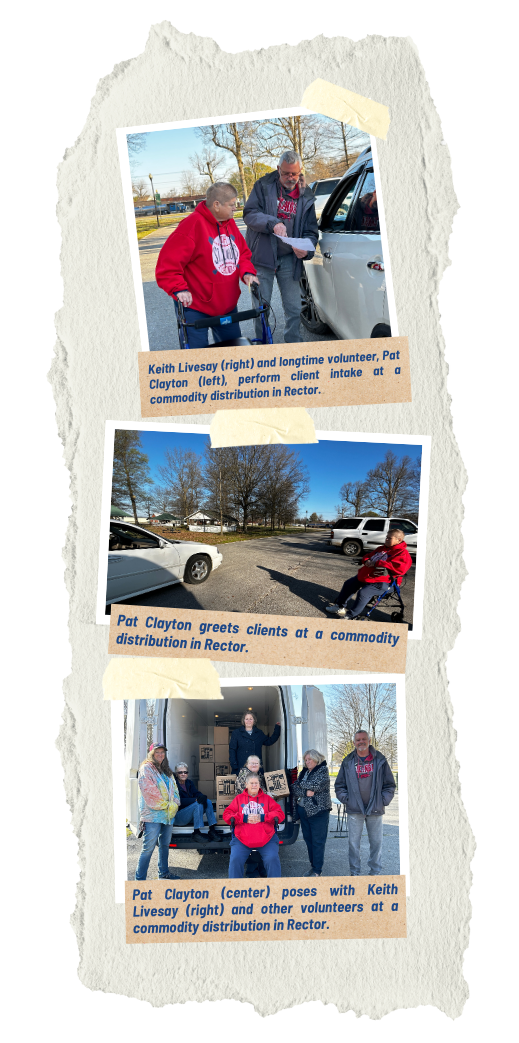
The first commodity distribution program in the United States began in the 1930s when crop prices fell as a result of WWI, the Great Depression, and the Dust Bowl. At the time, the program was called the Needy Family Program. Many things have changed regarding the distribution of commodities, but one person has remained a constant for commodity distributions in Clay County for more than 65 years: Pat Clayton.
Pat started helping with commodity distributions when she was just 6 years old. "Dad would always say, 'You kids get ready, we're going to get our food today and you've got to help these people.' And me and my three brothers carried out food for people," Pat said. "We didn't carry it because we had to drag it because then we got so much. People had it in tote sacks and stuff and we drug it to their cars for the older people for them to put their stuff in their car. They had to put it in their car because we couldn't pick it up."
Commodities are foods that the government can purchase and distribute to bolster farm prices. The Needy Food Program was the main source of food assistance for low-income people from the 1930s until the 1970s, when the Food Stamp Program was expanded.
When asked how things have changed in the last 67 years, Pat recalled that people used to receive blocks of cheese, bags of flour, meal, rice, canned meat, and dried milk. Recipients now receive a box of non-perishable items such as canned meat, canned vegetables, canned fruit, rice, beans, and soup, as well as perishable items like milk, fish, pork, and fresh produce. At our peak distribution in 2020, the Food Bank distributed more than 3.7 million pounds of USDA foods through The Emergency Food Assistance Program (TEFAP) and Commodity Supplemental Food Program (CSFP). In 2022, the Food Bank's distribution of USDA food was 2.2 million pounds - 40 percent decrease from 2020.
Since 1973, the Farm Bill has been used to make changes to and reauthorize food assistance programs. This includes the Supplemental Nutrition Assistance Program (SNAP), formerly known as "food stamps." The Food Bank works collaboratively with the USDA to meet the needs of our low-income neighbors. Cuts to nutrition programming like SNAP, TEFAP, and CSFP place a heavy burden on food banks. Bold anti-hunger solutions require broad support, including federal investments and policy changes.
While commodity distribution programs have seen many changes over the decades, we know we can count on two things: 1) the support of our community of donors, volunteers, and supporters, and 2) Pat Clayton.



